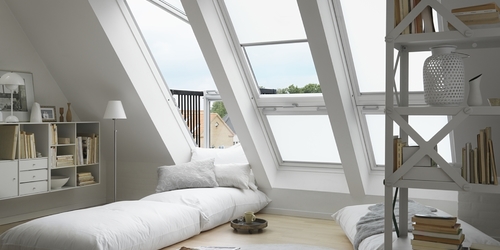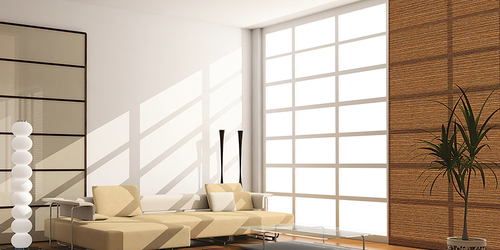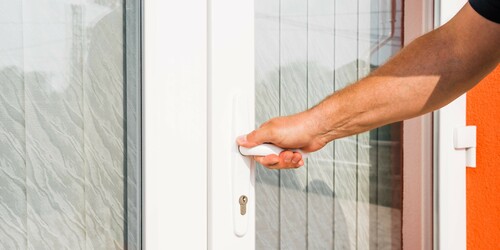How to arrange windows in a Scandinavian style

Renovate or what owners of a new online device have for free. From whatever you want. Currently, we have our interior in mind the idea of what style, the...
More »Photovoltaics is a fascinating process that uses a phenomenon known as the photovoltaic effect to convert solar energy into electrical energy. The basic component of photovoltaics are solar panels, which consist of photovoltaic cells made from semiconductor materials, such as silicon. When sunlight falls on these cells, photons excite electrons, generating an electric current. This current is then converted by an inverter into alternating current, which can be used to power household electrical devices.
The efficiency of photovoltaic panels depends on several factors, such as sunlight exposure, the angle of sunlight incidence, the quality of photovoltaic cells, and the efficiency of the entire system. Therefore, it is important to ensure proper installation conditions and regularly maintain the system to maximize its performance.
Photovoltaics can be used both to power individual devices and to power entire buildings. There are also different types of photovoltaic systems, such as grid-tie, off-grid, and hybrid systems, which can be adapted to different needs and local conditions.
Savings on Electricity Bills One of the biggest benefits of installing photovoltaic panels is the ability to significantly reduce electricity bills. By using solar energy to power your home, you can reduce or even completely eliminate the need to use electricity from the power grid. This is especially important in regions with high electricity costs or in households with high energy consumption.
The financial benefits associated with photovoltaics can be significant, especially in the longer term. Although the initial cost of installing photovoltaic panels can be high, the return on investment can be quick, especially if you take advantage of available tax breaks, subsidies, or preferential loans.
Environmental Protection Using solar energy instead of traditional energy sources, such as coal or gas, has significant benefits for the natural environment. Generating electricity from fossil fuels is associated with the emission of harmful greenhouse gases, which contribute to climate change, air pollution, and a decrease in the quality of life on Earth. Photovoltaics, as a clean and renewable energy source, allows for the reduction of greenhouse gas emissions and limits the negative impact on the natural environment.
Improving air quality can bring a range of health benefits for humans, animals, and plants. Reducing air pollution can reduce the risk of respiratory diseases, allergies, and other conditions related to environmental pollution. Additionally, preserving a clean natural environment is crucial for protecting biodiversity and maintaining ecosystems that support life on Earth.
Increase in Property Value A home with an installed photovoltaic system can be more attractive to potential buyers. More and more people appreciate the benefits of owning a home that produces its own energy, which can lead to an increase in property value in the long term. The added value provided by the photovoltaic system can result from potential savings on electricity bills, ecological benefits, and the prestige associated with owning a green home.
It's also worth noting that investing in a photovoltaic system can increase the attractiveness of a property on the rental market. Nowadays, more and more tenants are looking for premises with low maintenance costs and environmentally friendly, making homes with installed photovoltaic panels more competitive in the rental market.
If you are wondering how to start using solar energy, here are a few steps you can take:
Conduct an analysis of your home: Identify the best places for the installation of solar panels, such as roofs with southern or western exposure and minimal shading. It's also important to ensure that your roof is in good technical condition and can withstand the additional load from photovoltaic panels.
Contact a local provider: Ask about offers for the installation of photovoltaic systems. You can also seek advice from specialists in this field who will help you customize the system to your individual needs. Before deciding to purchase a photovoltaic system, it's worth comparing offers from different providers and checking their references and customer reviews.
Apply for a subsidy or financing: In some regions, there are government programs supporting the installation of photovoltaic panels through grants or preferential loans. Before applying for funding, it's worth familiarizing yourself with the program's conditions and requirements and consulting with a renewable energy expert to choose the best financial solution.
Install the photovoltaic system: After accepting the offer and obtaining all necessary permits, install the photovoltaic system on your roof. During installation, it's worth monitoring the progress of the work and regularly communicating with the provider in case of any questions or doubts.
Monitor your energy consumption: After installing the photovoltaic system, it's worth regularly monitoring your energy consumption and system performance to ensure you are achieving maximum savings. There are various tools and applications that allow you to track electricity consumption in real-time and analyze data on photovoltaic system performance.

The cost of installing a home photovoltaic system can vary and depends on many factors, such as the size of the system, the type of panels used, geographical location, and possible installation and permit costs. Generally, the cost of installing photovoltaics includes the cost of solar panels, inverter, installation, monitoring system, and any additional accessories.
In some regions, there are also government programs supporting the installation of photovoltaic panels through grants, tax breaks, or preferential loans, which can significantly reduce investment costs. It's also worth noting that despite the initial costs, investing in photovoltaics can bring a return on investment in a relatively short time, especially if you take advantage of available financial support programs.
The cost of installing a photovoltaic system can also depend on local regulations and requirements for the installation of solar panels. Some regions offer tax breaks or grants for those installing photovoltaic panels, which can significantly reduce investment costs. There are also available financing options, such as preferential loans and leasing, which allow spreading the installation costs over installments, which can be an attractive option for those with limited financial resources.
It's also worth noting that despite the initial costs, investing in a photovoltaic system can bring savings on electricity bills and potential financial benefits associated with the production of surplus electricity. In many cases, the return on investment in photovoltaics can be achieved in a relatively short time, especially in regions with high electricity costs or in households with high energy consumption.
The question of the profitability of photovoltaics often preoccupies potential investors. In reality, the profitability of installing a photovoltaic system depends on many factors, such as investment costs, electricity prices, geographical location, system efficiency, and the availability of tax breaks and subsidies.
Many people are concerned that the initial cost of installing a photovoltaic system may be too high, however, it's worth noting that investing in photovoltaics can bring a return on investment in a relatively short time, especially if you take advantage of available financial support programs. Additionally, savings on electricity bills and potential financial benefits associated with the production of surplus electricity can outweigh the investment costs in the long term.
The profitability of installing a photovoltaic system can also depend on local climatic conditions and sunlight exposure. Regions with high sunlight exposure can be more profitable for the installation of photovoltaic panels, as they will produce a larger amount of electricity, which translates into greater savings on electricity bills.

There are several factors to consider when choosing the location for installing solar panels. The best places are those that are well-exposed to sunlight for most of the day and are not shaded by trees, buildings, or other obstacles. The ideal location for installing solar panels is a roof with southern or western exposure, which receives maximum sunlight exposure for most of the day.
However, if the roof is not adequately exposed to sunlight or is not suitable for installing solar panels, there are other options, such as installing panels on the ground or on ground-based structures. It's also important to ensure that the installation site is stable and safe to avoid damage or accidents.
If the roof is not suitable for installing solar panels, there are other options, such as installing panels on the walls of the building or on special ground-based structures. It's worth consulting with a photovoltaic expert who will help choose the right solution for individual needs and local conditions.
Installing solar panels in windows may be the future of photovoltaics and even the best place for their installation for several reasons. Firstly, it allows for the utilization of previously unused surfaces for electricity production, increasing the potential for using solar energy. Photovoltaic panels installed in windows can be completely invisible from the outside, making them a very aesthetic solution, especially for modern buildings.
One of the innovative solutions on the market are special photovoltaic facade blinds offered by Knall. These modern systems are not only functional but also aesthetic, providing the possibility of harnessing solar energy. Thanks to the use of the latest technologies, photovoltaic panels in facade blinds can be completely invisible, making them an ideal solution for those who value both aesthetics and energy efficiency.
Special photovoltaic facade blinds from Knall are an innovative solution that allows for efficient and aesthetic use of solar energy. Thanks to them, buildings can become not only energetically self-sufficient but also more visually attractive, which is especially important in the context of contemporary architectural trends.
In the future, we can expect further development of photovoltaic technologies that will enable even wider use of solar panels in various places, including windows. Thanks to this, photovoltaics can become an even more common and versatile source of energy, contributing to the sustainable development of society and the protection of the natural environment.

In Summary Installing solar panels in windows may be the future of photovoltaics, and special photovoltaic facade blinds from Knall are an excellent example of an innovative and aesthetic solution to this problem. By using solar energy efficiently and aesthetically, we can not only save money on electricity bills but also care for the natural environment for future generations.

Renovate or what owners of a new online device have for free. From whatever you want. Currently, we have our interior in mind the idea of what style, the...
More »
Blinds for the living room - a practical and aesthetic solution Blinds for the living room are not only a practical solution, but also an aesthetic...
More »
Although roller shutters are primarily known as window covers, they can also be successfully thought of as a security solution for balcony doors and glazed...
More »